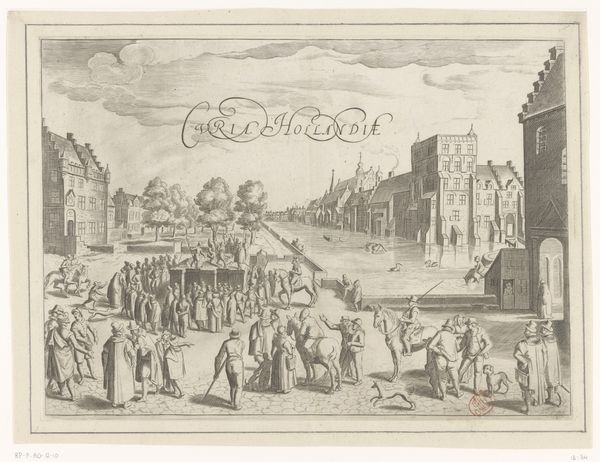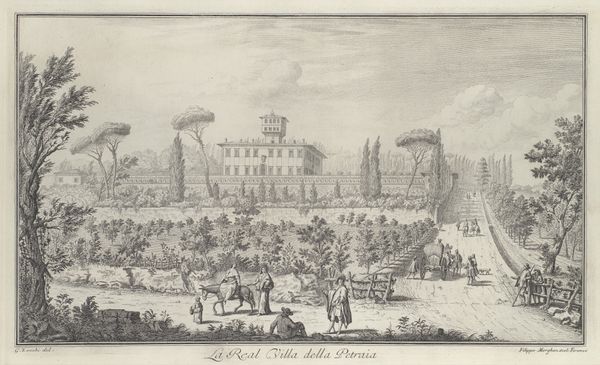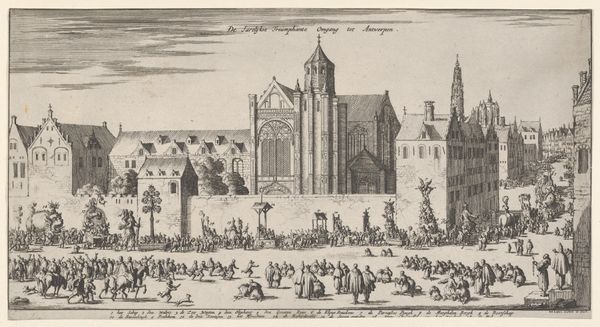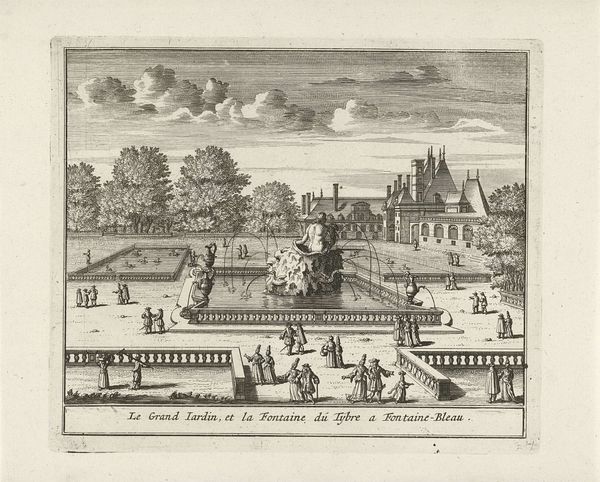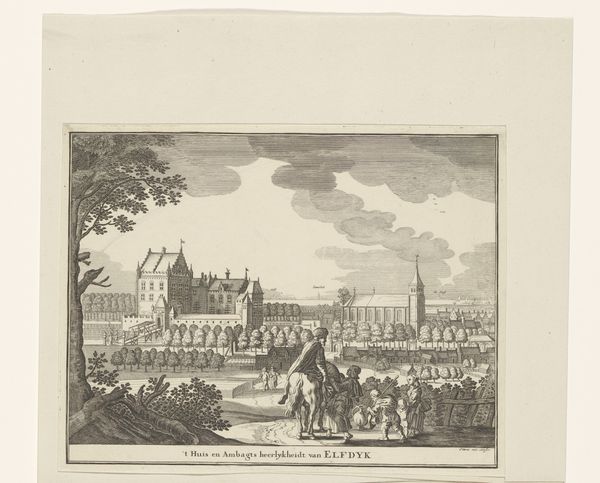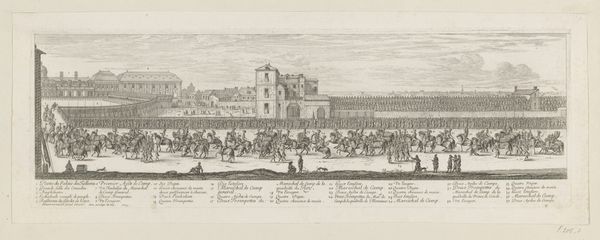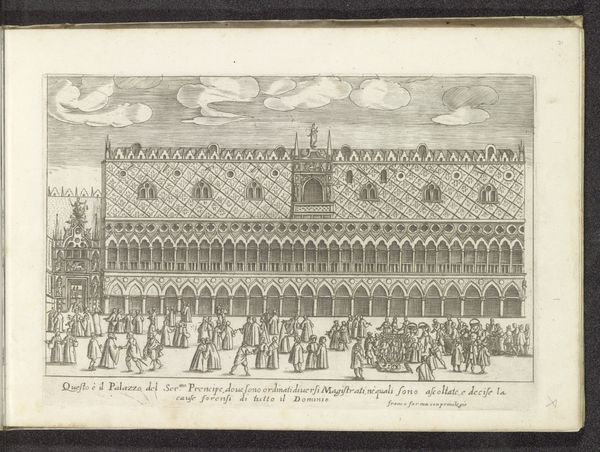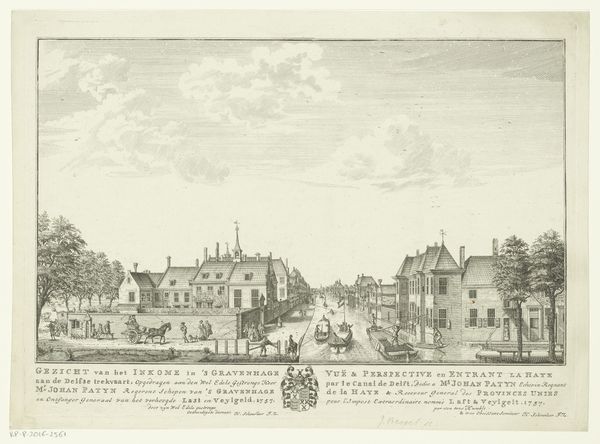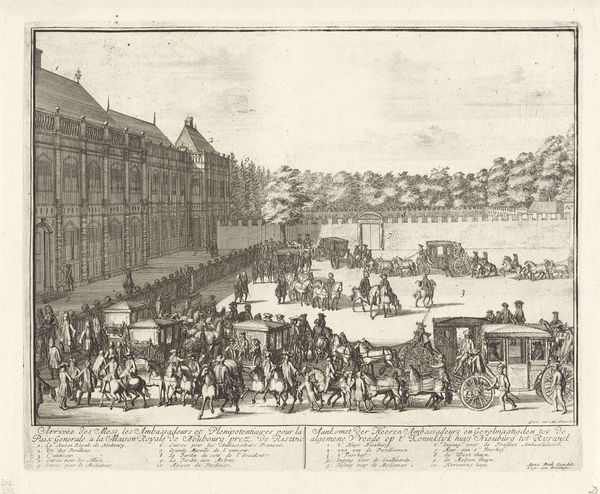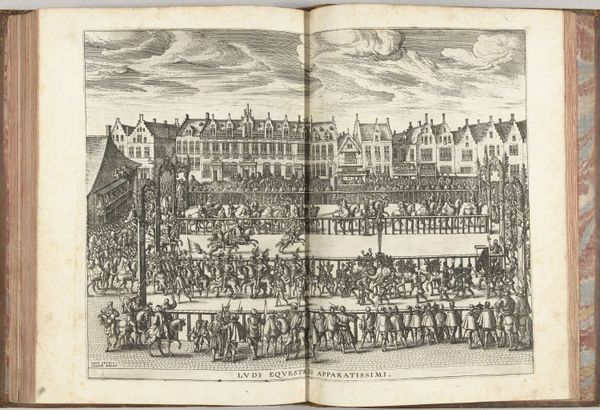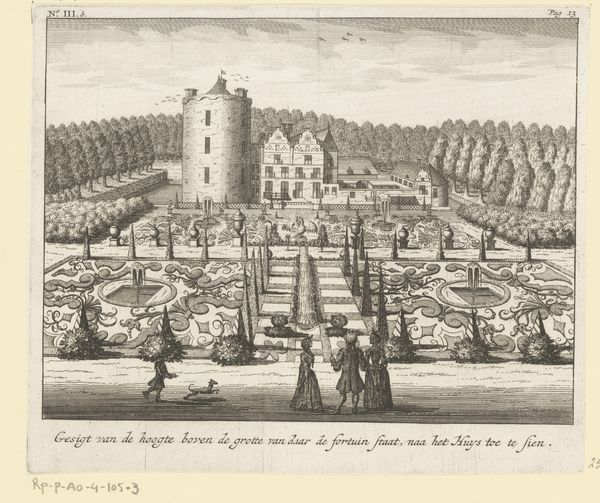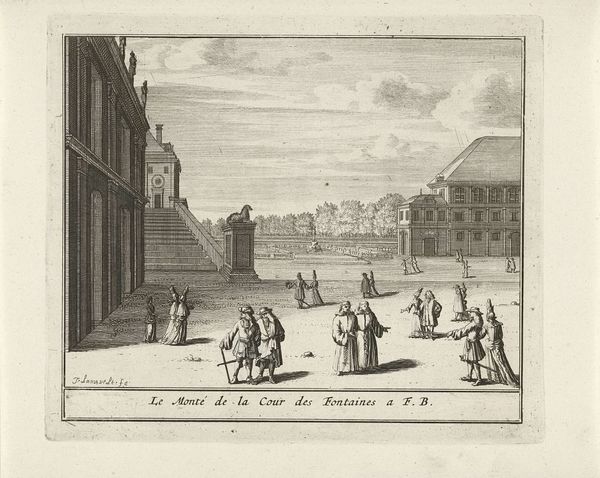
drawing, print, engraving
#
drawing
#
baroque
#
dutch-golden-age
# print
#
landscape
#
perspective
#
cityscape
#
history-painting
#
engraving
Dimensions: height 189 mm, width 299 mm
Copyright: Rijks Museum: Open Domain
Editor: This engraving, titled "Gezicht op het Buitenhof te Den Haag," created sometime between 1711 and 1729, depicts a cityscape. The detail is really striking. I’m curious, what can you tell us about this work from an art historical perspective? Curator: Looking at this engraving, what jumps out is the material process that created this image and the social context surrounding its production. Engravings like these were not merely artistic expressions. The labor invested and skill required speaks volumes about the economic and cultural value placed on representing the Dutch landscape. Editor: So, the print itself is important as an object of labor? Curator: Exactly. Think about the artist meticulously carving into a metal plate. Then each print represents not just the image but also the access and availability of reproducible imagery. The circulation of these prints fostered a sense of national identity but also became commodities within a growing consumer culture. These weren't displayed as fine art only; prints would travel around. Editor: So it's less about individual genius and more about the industry behind the image? Curator: Precisely! And consider how the social structures – the wealthy class, merchant culture – financed the urban expansion that allowed scenes like this to exist and become fashionable representations of wealth. How is the built environment of the Buitenhof reflected and refracted by the engraving? Consider the relationship between materials and class, between the engraving and wealth in Dutch society. Editor: It's fascinating to think about this piece as a product of both artistic skill and complex social structures. I hadn’t really considered that relationship before. Curator: Reflecting upon its materiality can uncover this social narrative – the art isn't hanging by itself as this purely representational object, and seeing the material makes us consider other types of artistic practices. This wasn't necessarily a celebration, it could have also had a social criticism that influenced print culture later on.
Comments
No comments
Be the first to comment and join the conversation on the ultimate creative platform.
